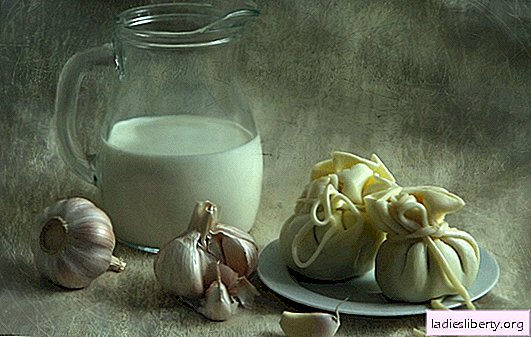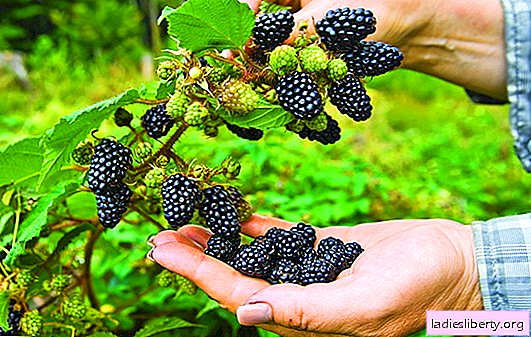
Calla is one of the most elegant plants from the Aroid family, flowering indoors.
Its "folk" names are: Callas and Aronnik. She comes from the marshy forests of South Africa.
In nature, there are 8 types of calla lilies, which are divided into 2 groups: tuberous and rhizome.
In addition to the appearance of the root system, they differ in the size and color of the bedspread (varieties of tuberous calla lilies have different colors, and rhizomes bloom mainly in white flowers).
Of these, for growing at home are suitable:
• Calla Ethiopian (Zantedesia) - The largest species cultivated in indoor floriculture. Large leaves are heart-shaped. Blooms funnel-shaped white flowers. Unlike colored calla lilies, it maintains leaves during dormancy and remains green. The most popular varieties: Green Goddess, Pearls, Nicholas, Childsiana; Albomaculata.
• Calla Eliot reaches a height of up to 50cm. It has large variegated leaves, a yellow flower bedspread. Famous varieties: Black-eyed beauty, Yellow Corner, Vermeer, Black Beauty, Captain Chelse.
• Calla Remani - compact tuberous look (up to 70 cm high). Based on it, varieties with red, pink, purple, black shades of bedspreads were bred. Popular varieties: Chameleon, Evening, Indian Summer. Anneke, Black Forest, Bolero.
Callas in pots, home care, which are not as complicated as it seems at first glance, still need a special approach. So that they not only grow, but also bloom in room conditions, the grower is required to create the optimal combination of conditions that are most similar to natural ones.
Calla: home care - reproduction, transplantation
Breeding
At home, callas are propagated mainly vegetatively. In zantedeskia, the rhizome is divided into parts. Each of them must have at least one kidney. Slices are dried and dusted with charcoal powder or disinfected with brilliant green. The division of rhizomes must be carried out at least once every 4 years. Otherwise, small side shoots are formed around the mother bush that will not give flowering. After that, the dividends are planted in a separate pot.
In colored callas, daughter nodules are separated from the mother.

The sprouted calla tuber is ready for division
Propagation by seed is the most difficult way. This is due to the low percentage of their germination. If it was possible to obtain ripened seeds, they must be soaked before planting in a growth stimulator (Kornevin, Epin, Heteroauxin, Ethamon, Zircon), and then left for germination in a warm place on a damp sponge or gauze. After the seeds have hatched, they can be planted in the ground. However, another complication arises here: planting material often rots. To reduce losses to a minimum, it is better to moisten the sprouts not from above, but through the wick. Planting crops at a temperature of + 22ºС. Seedlings dive 2 months after sowing.
Transfer
Callas are transplanted annually in the spring after the end of the dormant period. At the same time, rhizomes or tubers can be divided. Pots use wide, not too deep. Drainage up to 5 cm thick is mandatory at the bottom. Callas are planted in pots no deeper than 5-10 cm.
In colored callas, the selected tubers should be resilient, vibrant, with a smooth yellowish skin. Before planting, it is recommended that they be kept in a weak solution of potassium permanganate or treated with a fungicide.
Delenki white callas planted to a depth equal to their 3-fold diameter of their rhizomes.
At first, it is not worth watering the landing heavily - there is a high probability of decay (it is better to spray from the spray gun). After the appearance of sprouts (approximately 14 days after transplantation), active watering and top dressing begin.
Callas in pots: home care - soil, lighting, temperature and humidity, flowering conditions
The soil
For tuberous calla varieties, a suitable soil composition would be: leaf, turf, humus, coarse sand in a ratio of 1: 2: 1: 0.5. For rhizome varieties, you can use universal soil for flowering plants or replace it with this mixture: equal parts of humus, leafy soil, coarse sand, 2 parts of turfy soil, ¼ part of clay. In both versions, 1 tablespoon of superphosphate is added to 3 l of the total volume of the substrate.
Lighting and location
Callas need bright diffused light. The daylight hours should be 10-12 hours. In autumn and winter, it is necessary to provide additional lighting with an intensity of at least 700-800 Lux. Lack of light leads to a loss of decorativeness of the plant: leaf petioles are extended, flowering is absent, tuber callas show a pale color of bracts.
In summer, the western and eastern windows will be the best location for Zantedeschia. In winter, on the contrary, it is better to rearrange it to the south side to get additional sunlight.
Temperature and humidity
For different types of callas, the temperature and humidity in the room have some differences.
Rhizome plants during the active growing season feel good at + 17-21ºС. After flowering during dormancy, they are kept at + 10-13ºС for at least 2 months.
White callas need high air humidity (70-80%). To do this, they spray their leaves with soft water, put the pots on pallets with wet moss, expanded clay. Better yet, use special humidifiers.
The optimum temperature for the development of "colored" callas will be + 20-24ºС. During the "rest" of plants, it is increased to + 25-28ºС so that the tubers ripen and flower buds are formed. Tuber calla is quite moderate air humidity (50-60%). Every day they wipe the leaves with a damp sponge.
Conditions for flowering: why does not calla bloom?
It often happens that calla bought in the store does not bloom at home. One of the reasons for this behavior is the “vegetation-rest” regime. Commercially available plants are “pumped” with phytohormones to preserve a presentable appearance. To send Aronnik to "hibernation", it is necessary to reduce watering and put the pot in a cool room.
Irregular watering also slows down the beginning of flowering. Wingfly as a tropical plant likes to actively "quench thirst" during the growing season. This is especially true for Ethiopian calla lilies. It is important to remember that it is impossible to water these “green African women” with cold water - root rot is very likely. For this, it is better to use soft warm (+ 20-25 ° C) standing water.
An improper pot size is another likely cause of a calla lack of flowering. This tropicana is growing pretty fast. When she becomes cramped in a pot, she stops growing and is in no hurry to delight with her elegant flowers. After a period of dormancy, the overgrown "family" must separate the "children" that weaken the mother plant and transplant into separate pots. At the same time, the soil is changed to fresh.
Improper feeding conditions adversely affects the wing of wingflower bloom. With an excess of nitrogen, the plant "eats" - it develops a deciduous mass to the detriment of flowering. Therefore, it is necessary to introduce phosphorus-potassium fertilizers, "responsible" for flowering.
With insufficient depth of planting of a tuber or rhizome into the soil, there is an active increase in lateral shoots. If they are not separated and transplanted, then there will be no flowering.
Calla: home care - top dressing and watering
Watering
In watering, callas also have different requirements. So, “colored” callas are watered sparingly: stagnation of moisture in the soil can become fatal for them (rot forms on tubers). Excess water is drained from the pan. The next watering is carried out when the top soil layer dries 2-3 cm deep.
"White" calla lilies like plentiful watering, especially during the period of active growth. The soil in the pot should always be wet.
After flowering in all species of this plant, watering is reduced to 1 time per week, and tuberous specimens after 1-2 months of this regimen cease to water at all.
Top dressing
With the release of callas from the dormant period, it is fed every 2 weeks, alternating mineral and organic fertilizers. When foliar top dressing is carried out, the plants are sprayed so that the liquid does not fall onto the bracts of the bed (ugly spots form on them and the flower loses its decorativeness).
Callas in pots: home care - why do they die?
Callas in pots at home often die with improper care, as a result of which weakened plants are affected by pests and diseases.
The most malicious "callas" lovers are spider mite, whitefly and aphid. To destroy them, acaricides (Actelik, Sunmayt, Vertimek) and insecticides (Fitoverm, Biotlin, Aktara, Akarin) are used.
With improper irrigation and temperature conditions, callas are often affected by various bacterial and fungal infections. Root rot can be recognized by such signs: mass wilting of leaves and peduncles, necrotization of the root system. Its occurrence is promoted by increased humidity and air temperature, an excess of nitrogen in the soil. To help the plant in this case, it is necessary to temporarily stop watering, partially replace the wet soil with dry soil, treat the plant with a fungicide solution (Fundazol, Previkur, Rovral).
Gray rotcaused by the pathogenic fungus Botrytis cinerea, spreads through contaminated soil, water, and wind. A characteristic feature of it is a gray coating on the plant.
In case of defeat bacterial rot peduncles, roots, leaf bases darken, over time, the plant dies. Sick callas should be destroyed.
If brown spots appear on the leaves of a rounded shape, gradually merging, this means the plant is sick with anthracnose. Damaged parts of calla lilies are removed, the plant itself is treated with fungicidal preparations.
Why do calla lilies turn yellow at home?
Calla leaves turn yellow when kept at home for 2 reasons: preparation for a dormant period and inaccuracy in care.
After the plant has bloomed, it begins to prepare for a "well-deserved rest": in "colored" calla lilies, all leaves turn yellow and die, and the "white" zantedesci retain green foliage.
Improper care of callas affects the appearance of the plant. As a tropical plant, it needs high humidity, which in living conditions is difficult to maintain at the proper level (especially in the heating season). Therefore, callas should be often sprayed with settled water, rearrange it away from heating appliances.
Waterlogging or overdrying of the substrate also leads to a change in the color of the leaves and their withering.
Although feces require a long daylight hours (10-12 hours), too bright lighting depresses it. Therefore, if the plant is on the south window, it must be shaded or rearranged in another place.

Calla leaf burn
Prolonged cultivation of calla lilies in one pot without transplanting and replacing the soil leads to its depletion and, as a result, to yellowing of the leaves. Nutrient deficiency also causes increased fragility of leaf petioles. With a lack of nitrogen, the leaves lose their gloss, their ends droop, and with a grip of potassium, they rise up.











